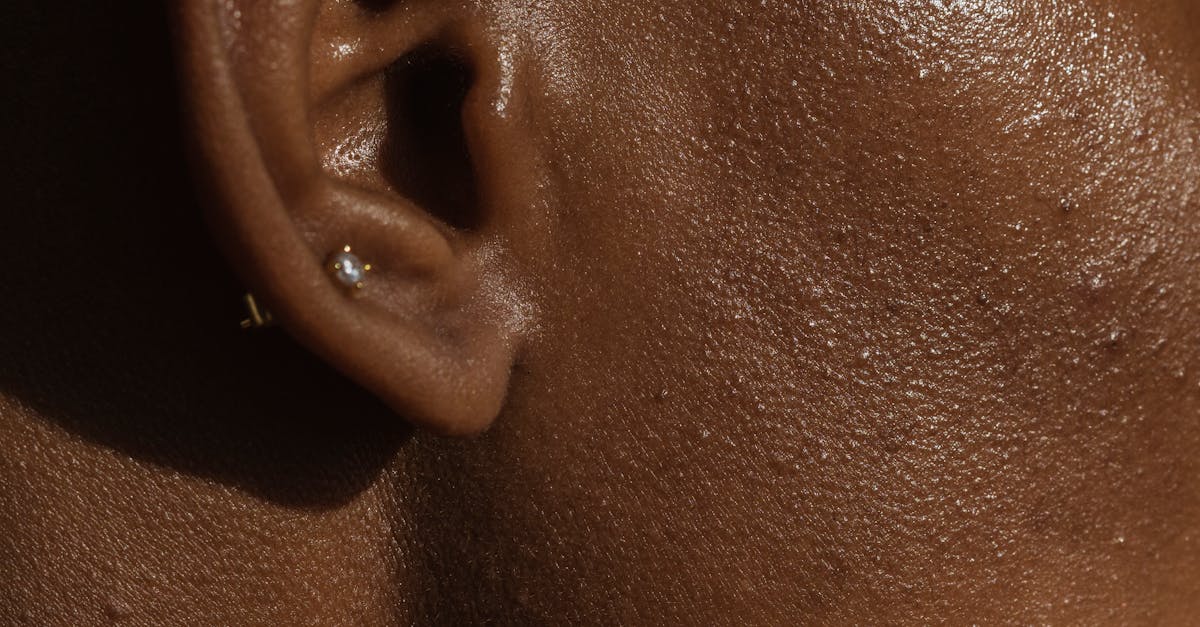
Ultimate Ear Piercing Guide For Beginners
- October 01, 2024
- 5 min Read
- Views 507
Ultimate Ear Piercing Guide for Beginners
Are you considering getting your ears pierced but feel overwhelmed by the plethora of information out there? Here’s the ultimate ear piercing guide for beginners to help you make an informed decision and embark on your new look with confidence.
Types of Ear Piercings
One of the first steps in your ear-piercing journey is choosing the type of piercing. There are various styles to consider, each with its own aesthetic and healing process. Here are some popular types:
- Lobe: The most common and beginner-friendly piercing located on the soft, lower part of the ear.
- Helix: Positioned on the upper ear cartilage, providing a stylish yet subtle look.
- Tragus: The small flap of cartilage in front of the ear canal, offering a unique visual appeal.
- Conch: Centered in the middle part of your ear cartilage, allowing for both inner and outer conch piercings.
- Daith: Found in the innermost fold of your ear cartilage, often associated with migraine relief.
- Rook: Pierced through a ridge in the upper ear cartilage, giving a complex and distinct appearance.
Preparing for Your Piercing
Preparation is key to ensuring your piercing experience goes smoothly. Here are some steps to help you get ready:
- Research: Make sure to understand the healing process, aftercare, and potential risks associated with your chosen piercing type.
- Choose a Reputable Piercer: Find an experienced and licensed professional who follows stringent hygiene standards. Check reviews and ask for recommendations.
- Consultation: Schedule a consultation with your piercer to discuss any concerns, the procedure, and aftercare instructions.
- Avoid Blood Thinners: Refrain from consuming alcohol, caffeine, or any medications that thin your blood at least 24 hours before the procedure.
The Piercing Procedure
Knowing what to expect during the actual piercing can help alleviate any anxiety. Here’s a general overview of the steps involved:
- Cleaning: The piercer will sanitize your ear to remove any bacteria and reduce the risk of infection.
- Marking: A sterile marker will be used to mark the exact spot for the piercing, ensuring perfect placement.
- Needle or Gun: Depending on the piercing type, the piercer will use a sterilized needle or piercing gun to create the hole.
- Jewelry Insertion: Once the hole is made, your chosen jewelry will be inserted. Starter jewelry is typically larger to accommodate any swelling.
- Aftercare Instructions: You’ll receive detailed aftercare instructions to promote proper healing and avoid complications.
Piercing Aftercare
Proper aftercare is crucial for a smooth and infection-free healing process. Follow these guidelines to ensure your new piercing stays healthy:
- Cleaning Routine: Clean your piercing twice a day with a saline solution or a non-alcoholic antiseptic.
- Avoid Touching: Refrain from touching or rotating your jewelry with unwashed hands to prevent bacteria transfer.
- Avoid Swimming: Stay away from pools, hot tubs, and natural water bodies for at least the first few weeks.
- Be Cautious with Hair Products: Keep hair sprays, shampoos, and other hair products away from your piercing area.
- Healing Time: Different piercings have different healing durations. Earlobe piercings may take 6-8 weeks, while cartilage piercings can take several months to a year.
Guide Steps
Here’s a step-by-step guide to getting your first ear piercing:
- Step 1: Decide on the Piercing Type - Research the various ear piercing options to determine which style suits your personality and pain tolerance.
- Step 2: Research Piercing Spots - Identify reputable piercing studios in your area. Look for online reviews and recommendations.
- Step 3: Consultation - Schedule a consultation with a selected piercer to discuss your preferences and any medical concerns.
- Step 4: Appointment - Show up for your piercing appointment well-rested, having avoided any blood thinning substances.
- Step 5: Aftercare - Follow the provided aftercare instructions diligently to ensure proper healing.
FAQ
Does it Hurt to Get an Ear Piercing?
Pain levels can vary depending on the individual and the type of piercing. Earlobe piercings generally hurt less than cartilage piercings.
How Much Does an Ear Piercing Cost?
The cost can vary based on location, studio reputation, and the type of piercing. Prices generally range from $20 to $100.
What Jewelry is Best for a New Piercing?
Hypoallergenic materials such as surgical steel, titanium, and gold are best for new piercings to reduce the risk of allergic reactions and infections.
Can I Change My Jewelry After Getting a Piercing?
It's crucial to wait until your piercing is fully healed before changing jewelry. For earlobes, this can be 6-8 weeks, while cartilage piercings may require several months.
What Should I Do if My Piercing Gets Infected?
If you suspect an infection, don’t remove the jewelry. Contact your piercer or a healthcare provider for advice. Cleaning with saline solution can help, but avoid using alcohol or hydrogen peroxide.
Tags
ear piercings, types of ear piercings, how to care for ear piercings, beginner's guide to ear piercings, ear piercing tips, piercing aftercare, safe ear piercing, popular ear piercings
References
People Also View
-
1October 09, 2024
-
2October 01, 2024
-
3October 14, 2024
-
4October 13, 2024
-
5October 09, 2024
Categories
- Near Me 2147 Posts
- How To 548 Posts
- Where To 257 Posts
- Why 90 Posts
- How Much 97 Posts
- Travel 202 Posts
- Food And Drink 815 Posts
- Shopping 797 Posts
- Lifestyle 1050 Posts
- Automotive 364 Posts
- Digital Income 70 Posts








